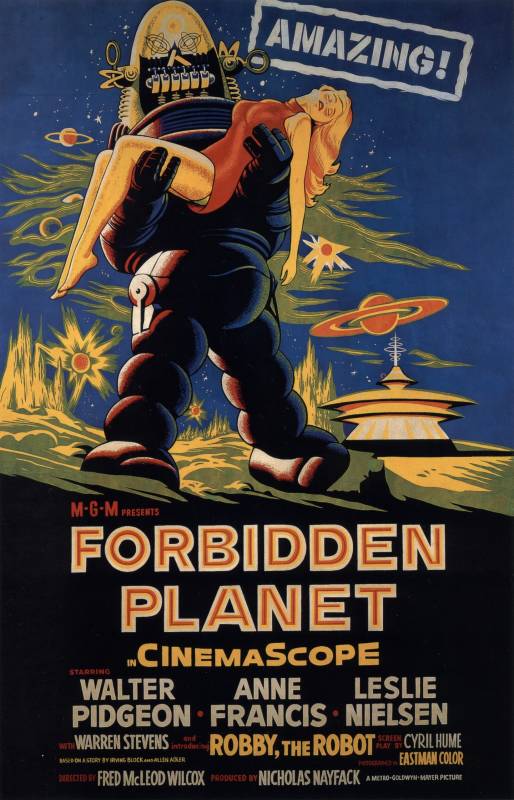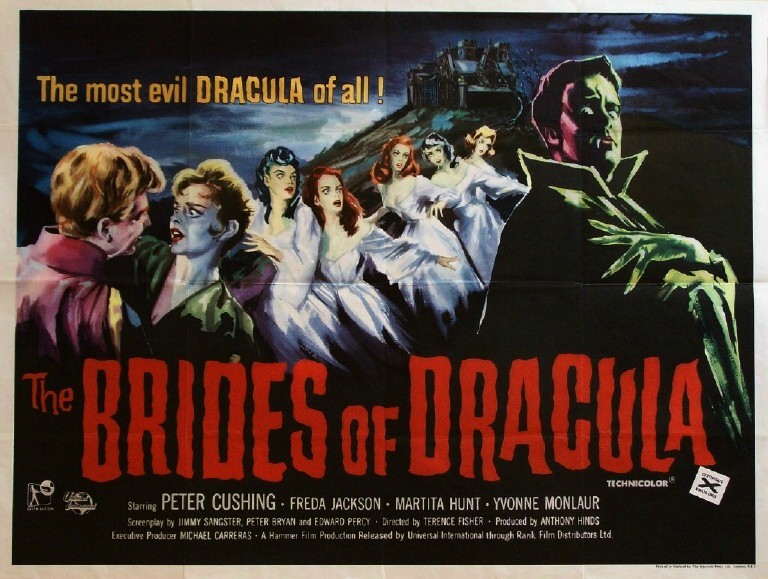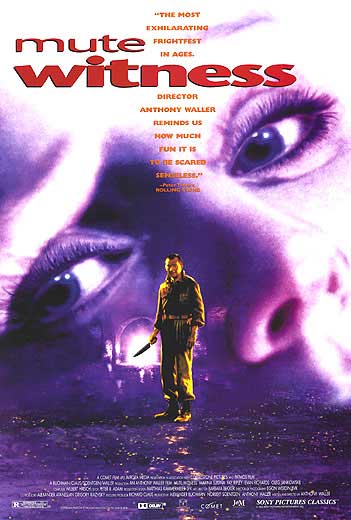A List of 5 Great Horror Movies to Check Out
As more and more people get into the horror genre fandom wise, they get assaulted with all of the classic films ranging from Alien to The Texas Chainsaw Massacre or recent popular movies such as The Descent or The Conjuring. Fringe titles may even become normal recommendations such as Candyman or 28 Days Later for stuff that’s a little off the ‘beaten’ path of mainstream horror.
I wanted instead to offer up a slathering of five great horror movies that are worth going out of your way to see starting in the 1950s and gradually moving up towards the 1990s. These are some known films that normally don’t come up in recommendations and deserve too. Some of these selections are a bit genre-bending in that they may not subscribe to pure horror. Note that these are not necessarily in order of how I would rank them as films.

1956: Forbidden Planet
Directed by Fred M. Wilcox
While this is far more science fiction based, it’s a classic little film in its own right with very strong writing in particular. A starship crew in the 23rd century goes to investigate what happened to a planet and come upon only two survivors, one of whom harbors a secret. It’s a notable picture for also starring Leslie Nielsen as Commander Adams although Anne Francis is a true knockout in her role as Altaira Morbius and steals half the scenes she’s in with just her physical presence. Walter Pidgeon also does a great job as Dr. Morbius and helps set up an unsettling air that there’s something not quite right despite everything looking okay on the surface.

1960: The Brides of Dracula
Directed by Terence Fisher
The sequel to the 1958 Dracula film, this one barely mentions him and it’s why I think this works so well. Van Helsing, played by Peter Cushing, returns to Transylvania to take on Baron Meinster played by David Peel. One of the strongest aspects of this film are the performances by Martita Hunt as Baroness Meinster and Freda Jackson as her maid, Greta. I also greatly enjoying seeing some of the female vampirism played up within this film compared to what would come later and it helps set up some genre staples as seen in other female vampiric films such as The Hunger.

1973: The Creeping Flesh
Directed by Freddie Francis
Professor Emmanuel Hildern, played by Peter Cushing, arrives at a laboratory where he informs a young doctor that he needs his help after discovering a real, live evil. The film then flashes back, recounting the entire story of what has developed up to the present day. It’s a neat film more closely resembling something like Mary Shelley’s Frankenstein and stars a great cast including Christopher Lee as Hildern’s brother and Lorna Heilbron who plays Penelope, Hildern’s daughter. One of the strengths of the film is that it teases the viewer and forces the viewer to try and unwrap whether what Hildern has said as the flash back story is true or whether he also is a madman and an unreliable narrator.

1987: The Stepfather
Directed by Joseph Ruben
The remake disappeared fast and the two sequels were average at best but the first film is a quality watch as Terry O’Quinn plays Jerry Blake, a man who marries a widow with a teenage daughter and tries to put together the perfect family he’s always dreamed of while harboring a sinister secret in his background. O’Quinn largely carries this film turning it into a very taut thriller and was nominated for Best Actor at the Saturn Awards. A lot of films have tried for the sweet nature outside vs. evil monster inside and O’Quinn did a great job managing to give his character something most actors fail to do: humanity and logic to the point a viewer can almost sympathize with him… until he twists.

1995: Mute Witness
Directed by Anthony Waller
While working on the set of a slasher film in Moscow, Russia, makeup artist Billy Hughes ends up witnessing a brutal murder and soon finds herself being chased by the killer. It’s not an overt horror picture as some fans would call it more of a psychological thriller (in the same vein as Silence of the Lambs) but it is extremely effective in building up constant tension in large part because our main lead is mute and cannot speak. The set designs are solid and the first half of the film is arguably the stronger of the two halves but actress Marina Zudina does a great job presenting a likable protagonist which the audience can’t help but care to see her live. Worth noting that Zudina was nominated for Best Actress at the Saturn Awards.

